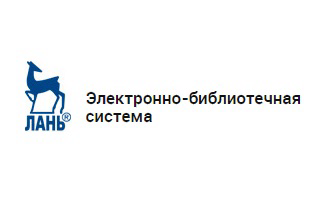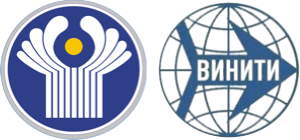| УДК 551.2.05 | DOI: 10.21440/0536-1028-2021-8-24-33 |
Introduction. The Arctic and the Far East shelf has a true and considerable potential for existing and new oil and gas fields development in the Barents, Kara, and Okhotsk seas. Projects on the continental shelf are closely connected to Russia’s integrated development and quality of life, therefore being of prime national importance. The paper considers natural and man-induced hazards found in the course of exploration drilling and offshore field infrastructure development in freezing seas and high crustal seismicity. Risk management and industrial safety technologies are described in the paper.
Research objective is to obtain reliable information on the state of the environment and mineral resourses on the continental shelf of Arctic and Subarctic seas to ensure the safety of offshore oil and gas field development.
Methods of research included the complex analysis of natural hazards of the Russian shelf, including shallow methane, gas hydrates, ice load, and man-induced hazards, namely offshore blowouts, gas lenses penetration when drilling, and permafrost thawing. The data from geological engineering survey, marine electrical prospecting, geophysical well logging, drilling and the history of offshore field development have been studied.
Research results. A problem of safe offshore operations has been revealed. The problem may be efficiently solved by using advanced technologies for natural and man-induced hazard identification and prevention. Shallow gas deposited in the upper part of the section has been discovered for the first time through the results of geophysical well logging at the fields of the Gulfs of Ob and Taz.
Conclusions. Safe offshore production requires the comprehensive study of the project area’s natural and climatic conditions, as well as geological engineering survey, marine work data analysis, and deep hole surveys. It will make it possible to identify hazardous natural geological processes and prevent man-induced impact on the delicate environment when developing shelf oil and gas resources.
Keywords: shelf; drilling; offshore fields; field infrastructure development; man-induced hazard; natural hazard; oil and gas resources; gas hydrates; shallow gas; permafrost.
REFERENCES
1. Korteleva Iu. V. On the prospects and risks of offshore projects in Russia. Colloquium Journal.
2021; 13(100): 37–38. (In Russ.).
2. Melnikov P. N., Varlamov A. I., Skvortsov M. B., Agadzhaniants I. G., Kravchenko M. N.,
Grushevskaia O. V. Development of the oil and gas resource base in the Arctic and continental shelf.
In: RAO CIS Offshore: Proceeding of 15th International Exhibition and Conference for Oil and Gas
Resources Development of the Russian Arctic and Continental Shelf. St. Petersburg; 2021: 218. (In Russ.).
3. Dziublo A. D. Geological and geophysical studies and models of natural reservoirs in the Barents-
Kara region in order to increase the resource base of hydrocarbons: DSc in Geology and Mineralogy diss.
Moscow; 2009. (In Russ.).
4. Dziublo A. D., Alekseeva K. V., Perekrestov V. E., Xiang Hua. Natural and technogenic
phenomena during development of oil and gas fields on the shelf of the arctic seas. Bezopasnost truda v
promyshlennosti = Occupational Safety in Industry. 2020; 4: 74–81. Available from: doi: 10.24000/0409-
2961-2020-4-74-81 (In Russ.).
5. Bogoyavlensky V. I., Kishankov A. V. Dangerous gas-saturated objects in the world ocean: the
Bering sea. Burenie i neft = Drilling and oil. 2018; 9: 4–12. (In Russ.).
6. Suryanarayana P. V., Bogdanovic M., Pathy K. T., Paimin M. R. Assessing the impact of shallow
gas hydrate dissociation on structural integrity in deepwater wells. In: International Petroleum Technology
Conference, Virtual. March 2021. Available from: doi: https://doi.org/ 10.2523/IPTC-21464-MS
7. Sun B., Zhang Z. Challenges and countermeasures for the drilling and completion of deepwater
wells in the South China Sea. Petroleum Drilling Techniques. 2015; 43(4): 1–7. Available from: doi:
10.11911/syztjs.201504001
8. Bogoiavlenskii V. I., Mazharov A. V., Pushkarev V. A., Bogoiavlenskii I. V. Gas emissions from
the Yamal peninsula permafrost areas. preliminary results of the expedition dated 8th July 2015. Burenie i
neft = Drilling and oil. 2017; 7-8: 8–13. (In Russ.).
9. Magomedgadzhieva M. A. Designing the infrastructure development for cluster-pads in severe
permafrost conditions. Proektirovanie i razrabotka neftegazovykh mestorozhdenii = Design and
Development of Oil and Gas Fields. 2017; 2: 4–18. (In Russ.)
10. Zhdaneev O. V., Frolov K. N., Konygin A. E., Gekhaev M. R. Exploration drilling on the Russian
Arctic and Far East shelf. Arktika: ekologiia I ekonomika = Arctic: ecology and economics. 2020; 3(39):
112–125. (In Russ.)
11. Bogatyreva E. V. Problems of increasing safety in the development of fields on the Arctic shelf.
Zashchita okruzhaiushchei sredy v neftegazovom komplekse = Environmental Protection in Oil and Gas
Complex. 2004; 5: 9–13. (In Russ.).
12. Petrenko V. E., Mirzoev D. A., Bogatyreva E. V. Problems of studying marine environmental factors
and creation of oil- and gas-field engineering structures for the development of the Arctic continental shelf.
Stroitelstvo neftianykh i gazovykh skvazhin na sushe i na more = Construction of Oil and Gas Wells on
Land and Sea. 2020; 1(325): 51–54. (In Russ.).
13. Dziublo A. D., Savinova M. S. Hazardous natural processes and risks at offshore fields development
with the use of subsea production of hydrocarbons. Izvestiya vysshikh uchebnykh zavedenii. Gornyi zhurnal
= News of the Higher Institutions. Mining Journal. 2020; 8: 5–13. (In Russ.)
14. Khalifeh M., Saasen A. Introduction to permanent plug and abandonment of wells. Stavanger:
Springer International Publishing; 2020. Available from: doi: 10.1007/978-3-030-39970-2
15. White J., Berry G. Emergency response planning for subsea hydrocarbon release using advanced
engineering analysis. In: Abu Dhabi International Petroleum Exhibition and Conference. Abu Dhabi,
UAE, November 10–13. 2014. Available from: doi: https://doi.org/10.2118/172123-MS









